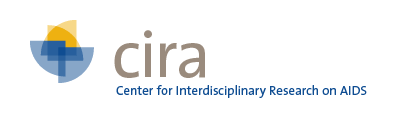| Title | Antiretroviral therapy in prevention of HIV and TB: update on current research efforts. |
| Publication Type | Journal Article |
| Year of Publication | 2011 |
| Authors | Granich, Reuben, Somya Gupta, Amitabh B. Suthar, Caoimhe Smyth, David Hoos, Marco Vitoria, Mariangela Simao, Catherine Hankins, Bernard Schwartlander, Renee Ridzon, Brigitte Bazin, Brian Williams, Ying-Ru Lo, Craig McClure, Julio Montaner, and Gottfried Hirnschall |
| Corporate Authors | ART in Prevention of HIV and TB Research Writing Group |
| Journal | Current HIV research |
| Volume | 9 |
| Issue | 6 |
| Pagination | 446-69 |
| Date Published | 2011 Sep |
| ISSN | 1873-4251 |
| Keywords | AIDS-Related Opportunistic Infections, Anti-Retroviral Agents, HIV Infections, Humans, Primary Prevention, Tuberculosis, Pulmonary |
| Abstract | There is considerable scientific evidence supporting the use of antiretroviral therapy (ART) in prevention of human immunodeficiency virus (HIV) and tuberculosis (TB) infections. The complex nature of the HIV and TB prevention responses, resource constraints, remaining questions about cost and feasibility, and the need to use a solid evidence base to make policy decisions, and the implementation challenges to translating trial data to operational settings require a well-organised and coordinated response to research in this area. To this end, we aimed to catalogue the ongoing and planned research activities that evaluate the impact of ART plus other interventions on HIV- and/or TB-related morbidity, mortality, risk behaviour, HIV incidence and transmission. Using a limited search methodology, 50 projects were identified examining ART as prevention, representing 5 regions and 52 countries with a global distribution. There are 24 randomised controlled clinical trials with at least 12 large randomised individual or community cluster trials in resource-constrained settings that are in the planning or early implementation stages. There is considerable heterogeneity between studies in terms of methodology, interventions and geographical location. While the identified studies will undoubtedly advance our understanding of the efficacy and effectiveness of ART for prevention, some key questions may remain unanswered or only partially answered. The large number and wide variety of research projects emphasise the importance of this research issue and clearly demonstrate the potential for synergies, partnerships and coordination across funding agencies. |
| DOI | 10.1007/s11904-011-0095-3 |
| Alternate Journal | Curr. HIV Res. |


